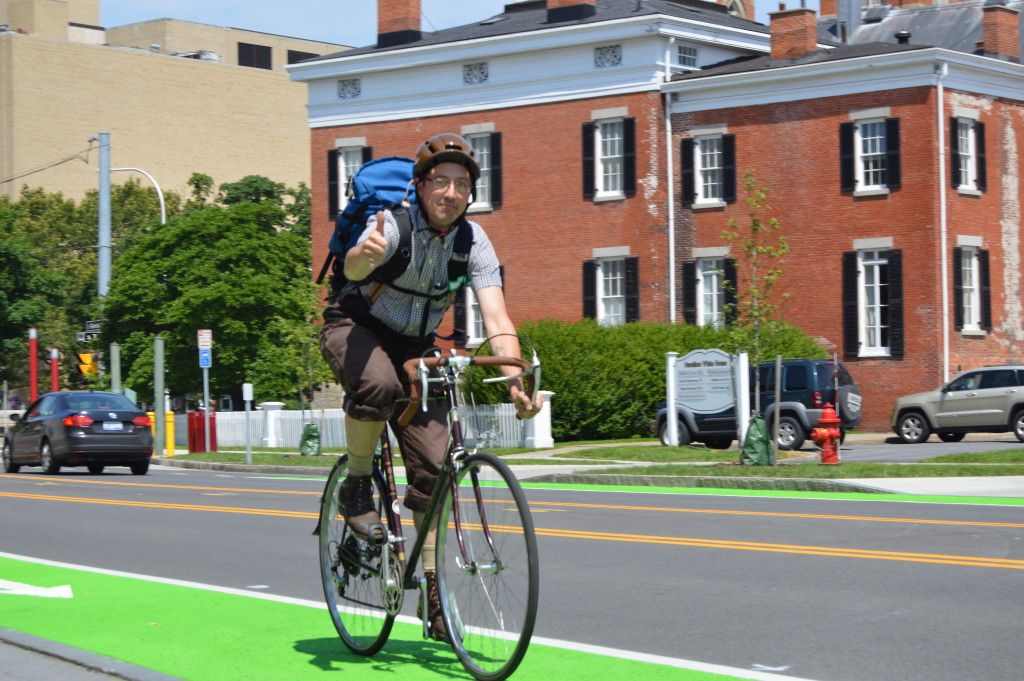Bike and Pedestrian Paths
Download a map of the Connective Corridor bike and pedestrian pathway here.
Syracuse is recognized globally as a green leader, and as the Connective Corridor’s new green bike lanes are an example of green technologies put into practical use as part of a green street network.
The green Methacrylate bike lanes on the Connective Corridor represent a novel approach to green technologies. They are a new generation resin that provides exceptional durability on asphalt and concrete, skid-resistance, and extremely high reflective values for safety. Besides being part of a beautiful new streetscape, they say “green” in a big way, especially for a City that recognized for its commitment to sustainability.
This new green bike network in Syracuse is one of the first in the country to implement new federal standards for green as a universal bike lane color. A handful of communities have simply painted over asphalt, but Syracuse is among the first to install a long-term solution. Unlike painted asphalt, which has to be re-done every few years, Methacrylate is designed to last up to 20 years.
Because this is such an innovative material and technique, local contractor Nagle Athletic Surfaces worked closely with the manufacturer to make this a showcase project. The manufacturer brought in a film crew and produced a training video for other communities. Nagle was especially proud to be engaged in this project since it is a local company, and the company founding partner was on site to assure top-quality installation.
Syracuse was one of the first communities in the country to implement methacrylate in this kind of application. Methacrylate is comprised of polymers used in applications where purity and stability are critical to performance – from medical pumps to heart valves, hyperbaric chambers and baby incubators. It is also used for specialty coatings that can be applied with reduced emissions of volatile organic compounds (VOCs) – and, it allows coatings to be easily applied while producing a long durable protective surface coating that is long lasting and highly resilient to weather, sunlight and other factors. It will be a first for Syracuse – a truly “smart, environmentally friendly, green bikeway” that advances sustainability and makes the city more bike-ped friendly.
These are the first of what is hoped will become a system of bikeways across the city.
The resurgence of bicycle culture in Syracuse is especially exciting because Syracuse was once the “hub” of the bicycle world and a pioneer in early bicycle manfacturing. In the 1890s, Syracuse was home to a large number of bicycle manufacturing companies including the renowned E.C. Stearns & Company which employed 2,000 and made 500 bicycles a day. Models such as the popular Stearns “Yellow Fellow” and “White Flyer” by the Barnes Cycle, were known around the world, as was the famous “Crimson Rim” by the Syracuse Cycle Company. Read more about Syracuse’s unique bicycle history here.

